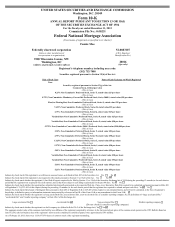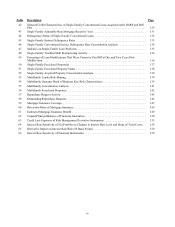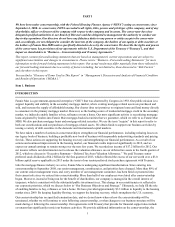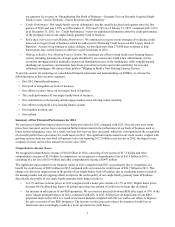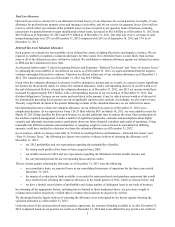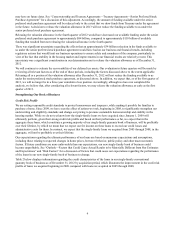Fannie Mae 2012 Annual Report Download - page 8
Download and view the complete annual report
Please find page 8 of the 2012 Fannie Mae annual report below. You can navigate through the pages in the report by either clicking on the pages listed below, or by using the keyword search tool below to find specific information within the annual report.3
our guaranty fee revenue in “Strengthening Our Book of Business—Guaranty Fees on Recently Acquired Single-
Family Loans,” and in “Outlook—Future Revenues and Profitability.”
• Credit Performance. Our single-family serious delinquency rate has steadily declined each quarter since the first
quarter of 2010, and was 3.29% as of December 31, 2012 and 3.18% as of January 31, 2013, compared with 3.91%
as of December 31, 2011. See “Credit Performance” below for additional information about the credit performance
of the mortgage loans in our single-family guaranty book of business.
• Reducing Credit Losses and Helping Homeowners. We continued to execute on our strategies for reducing credit
losses on our legacy book of business, which are addressed in “Reducing Credit Losses on Our Legacy Book of
Business.” As part of our strategy to reduce defaults, we provided more than 275,000 loan workouts to help
homeowners stay in their homes or otherwise avoid foreclosure in 2012.
• Helping to Build a New Housing Finance System. We continued our efforts to help build a new housing finance
system, including pursuing the strategic goals identified by our conservator: build a new infrastructure for the
secondary mortgage market; gradually contract our dominant presence in the marketplace while simplifying and
shrinking our operations; and maintain foreclosure prevention activities and credit availability for new and
refinanced mortgages. We discuss these goals in “Helping to Build a New Housing Finance System.”
To provide context for analyzing our consolidated financial statements and understanding our MD&A, we discuss the
following topics in this executive summary:
• Our 2012 financial performance,
• Our work to strengthen our book of business,
• Our efforts to reduce losses on our legacy book of business,
• The credit performance of our single-family book of business,
• Our contributions to the housing and mortgage markets since entering conservatorship,
• Our efforts to help build a new housing finance system,
• Our liquidity position, and
• Our outlook.
Summary of Our Financial Performance for 2012
We experienced significant improvement in our financial results for 2012 compared with 2011. Over the past year, home
prices have increased, and we have experienced further improvement in the performance of our book of business, such as
lower serious delinquency rates. As a result, our loan loss reserves have decreased, which has corresponded to the recognition
of a benefit (rather than a provision) for credit losses in 2012. The significant improvement in our credit results, coupled with
growing revenue from our new book of business, led to our reporting $17.2 billion in net income in 2012, the largest in our
company’s history and our first annual net income since 2006.
Comprehensive Income (Loss)
We recognized comprehensive income of $18.8 billion in 2012, consisting of net income of $17.2 billion and other
comprehensive income of $1.6 billion. In comparison, we recognized a comprehensive loss of $16.4 billion in 2011,
consisting of a net loss of $16.9 billion and other comprehensive income of $447 million.
The significant improvement in our financial results in 2012 compared with 2011 was primarily due to recognition of a
benefit for credit losses of $852 million in 2012 compared with a provision for credit losses of $26.7 billion in 2011. This
change was driven by improvement in the profile of our single-family book of business due to continuing positive trends in
the housing market and our ongoing efforts to improve the credit quality of our single-family guaranty book of business.
Specifically, the profile of our single-family guaranty book improved due to:
• A 4.7% increase in home prices in 2012 compared with a home price decline of 3.7% in 2011. Higher home prices
decrease the likelihood that loans will default and reduce the amount of credit loss on loans that do default.
• An increase in sales prices of our REO properties. We received net proceeds from our REO sales equal to 59% of the
loans’ unpaid principal balance in 2012, compared with 54% in 2011. Sales prices on dispositions of our REO
properties improved in 2012 as a result of increased demand compared with 2011 as well as our efforts to improve
the sales execution of our REO properties. The increase in sales proceeds reduces the amount of credit loss at
foreclosure and, accordingly, results in a lower provision for credit losses.

